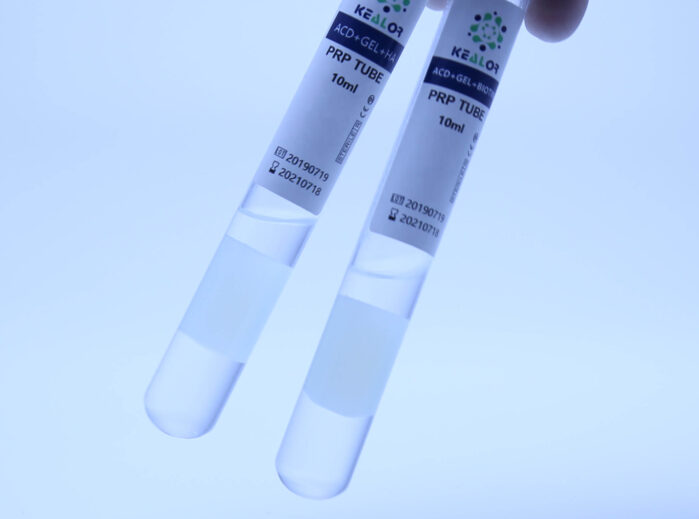Platelet-rich plasma (PRP) therapy has gained popularity in recent years as a treatment for various conditions, such as sports injuries, arthritis, and wound healing. PRP contains a high concentration of platelets, growth factors, and other bioactive molecules that promote tissue repair and regeneration. The activation of PRP is an essential step to release these factors and enhance its therapeutic efficacy. Calcium chloride and thrombin are two commonly used activators for PRP. In this blog, we will compare the use of calcium chloride with and without thrombin for PRP activation.
Calcium chloride is a commonly used activator for PRP. It works by activating the coagulation cascade and triggering the release of growth factors from platelets. Calcium chloride is a simple, cost-effective, and readily available activator for PRP. It is typically added to PRP in a ratio of 10% (w/v) and mixed thoroughly before application. The disadvantage of using calcium chloride alone is that it may cause a rapid release of growth factors, resulting in their degradation and reduced efficacy.
Thrombin is another commonly used activator for PRP. Thrombin is a clotting protein that is used to activate the PRP and trigger the release of growth factors from platelets. Thrombin is typically added to PRP in a ratio of 1-5 IU per milliliter and mixed thoroughly before application. The advantage of using thrombin is that it provides a sustained release of growth factors over time, resulting in enhanced efficacy.
The use of both calcium chloride and thrombin together has been shown to have superior efficacy compared to using either one alone. The combination of calcium chloride and thrombin provides a sustained release of growth factors over time while preventing their rapid degradation.
A recent study published in the Journal of Orthopaedic Surgery and Research compared the use of calcium chloride with and without thrombin for PRP activation in patients with knee osteoarthritis. The study found that the combination of calcium chloride and thrombin resulted in significantly better clinical outcomes compared to the use of calcium chloride alone.
In conclusion, the use of calcium chloride with and without thrombin for PRP activation has its advantages and disadvantages. While calcium chloride alone is a simple and cost-effective activator, it may cause a rapid release of growth factors resulting in their degradation. On the other hand, thrombin provides a sustained release of growth factors over time but may be more expensive and difficult to obtain. The combination of both activators has been shown to have superior efficacy compared to using either one alone. Ultimately, the choice of PRP activator may depend on the specific needs of the patient and the intended use of PRP therapy. It is always recommended to consult with a medical professional or healthcare provider for guidance on the use of PRP and its activators.








